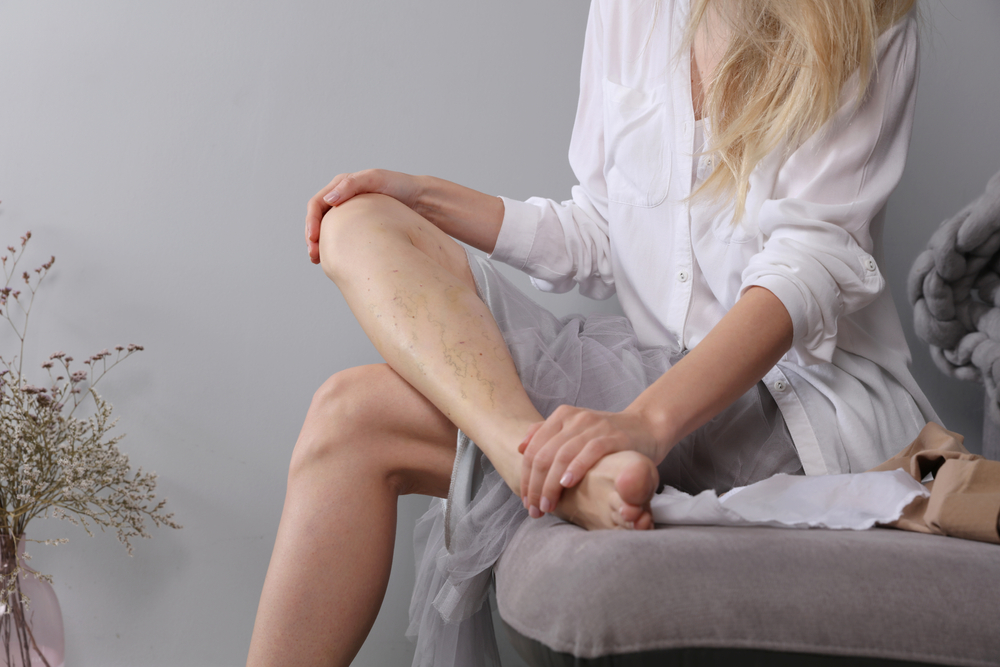
In honor of National Healthy Skin Month, we are taking a look at the role that UV exposure plays when it comes to the well-being of your skin. There are quite a few indicators of sun damage, especially at the surface level. If, when you look in the mirror, you see brown spots, deep wrinkles, and moles (to name a few), it is likely that your skin is telling you a story.
Typically, if skin has been overexposed to UV light, it will start to show signs of aging at a younger stage of life. If you are feeling like you have spent a little too much time in the sun, it’s not too late to refocus your attention on healthy habits and reverse the toll sun damage may have played in your life thus far.
Let’s first take a look at the most common indicators of sun damage and next, we’ll address how to move forward with a routine that will keep you looking and feeling your best.
Signs of Sun Damage
All of the following are issues your skin may experience if you have spent any significant amount of time in the sun, especially unprotected.
- Wrinkles – more than half of the wrinkles you see are likely associated with sun damage. That’s because UV radiation destroys collagen and elastin, which both aid in the protection of your skin, its strength, stretchiness, and overall health and function.
- Broken capillaries – tiny blood vessels around your nose and cheeks may become enlarged from too much sun exposure. When this happens, it creates the appearance of red spider veins. Remember when we said that elastin gets damaged from UV light? Well, elastin also holds blood vessels together tightly, and when elastin is compromised, these blood vessels become larger and more visible.
- Hyperpigmentation –trauma to the skin, such as from UV radiation, can cause skin to produce an abundance of melanin, the pigment that gives skin its color. These areas of darker skin form in patches and differ in size and shape.
- Age/brown spots and freckles – these are all common types of hyperpigmentation, and indicators of an overproduction of melanin. Funny enough, age spots aren’t a giveaway to your actual age, but rather how much sun you have been exposed to. Same goes for brown spots and freckles, which are not to be confused with birthmarks or noncancerous brown growths.
- Blackheads – believe it or not, blackheads don’t just arise from acne conditions. If you have a large area containing many blackheads that seem to be connected to one another, this could be due to a loss of elasticity in your skin. Sun penetration on the skin, especially around the nose, causes pores to become enlarged. When pores are open, more dirt and oil can settle in as a result and cause the appearance of blackheads.
- Red neck & chest – if you have a reddish-brown neck or chest, and the intense color never goes away, you may have something called Poikiloderma of Civatte. This is a condition in which skin appears to be discolored from receiving too much sun.
- Rough, dry skin – the sun can permanently change the structure of your skin. Too much of the sun’s exposure over time can cause you to develop scaly patches that are thicker and denser than the rest of your skin. It’s important to keep an eye on these textural changes in your skin, since having raised spots can often be an indicator of skin cancer.
- Moles – most moles develop when cells, which produce pigment, grow in groups. They can appear as small, round, or oval, and as dark or flesh-colored bumps on your skin. As new moles or growths appear, you should conduct a skin self-exam right away by following the ABCDEs of melanoma, and subsequently schedule an appointment with a dermatologist to make sure your mole isn’t cancerous.
Some of the above conditions are simply a nuisance cosmetically, and don’t require treatment unless you’d like to minimize their appearance. However, it’s important to pay attention to a number of these conditions such as rough patches, new moles, and spots. The sun’s ultraviolet rays damage the DNA in your skin cells and lead to cell mutation and formation of malignant tumors. Early identification and diagnosis of cancerous lesions increases the likelihood that treatment will be successful.
To make a diagnosis, your dermatologist will perform a skin examination, and determine next steps. Depending on the size, location and severity of the growth, several treatment options are available to remove cancerous cells, including Mohs micrographic surgery, the most effective technique for most types of skin cancers, with minimal scarring or risk.
Forging Ahead
Dermatologists are experts at identifying any skin conditions you may be concerned about and can help you formulate a treatment plan that’s best for your lifestyle. For those dealing with skin ailments caused from the sun, a number of treatment options are available. From laser resurfacing therapy and cosmetic injectables, to the use of restorative skin care products and topical prescription medications, a reputable dermatologist can help minimize the effects of sun damage.
It’s important to remember that excessive sun exposure can lead to an increased risk of developing skin cancer such as melanoma. To help protect yourself from a diagnosis, you should wear water-resistant and broad-spectrum sunscreen with an SPF of 30 or higher daily, wear protective clothing, avoid tanning beds, and try to seek shade during the hours of 10 a.m. and 2 p.m., since the sun’s UV rays are strongest during that timeframe.
Contact FLDSCC for All Your Skin Care Needs
Florida Dermatology and Skin Cancer Centers provides a full spectrum of dermatology and skin care services, and its team of physicians, APRNs, and PAs are experts in diagnosing and treating skin cancers with the latest technological options. Medical Director, Dr. K. Wade Foster, is fellowship-trained in Mohs surgery, the most effective technique for most types of skin cancers, with minimal scarring or risk.
For more information about services that Florida Dermatology and Skin Cancer Centers provides, or to make an appointment for a skin exam, visit www.fldscc.com or contact us at (855) FLD-SKIN.


